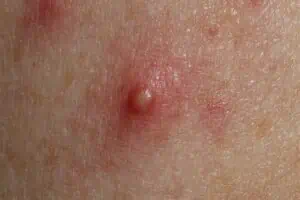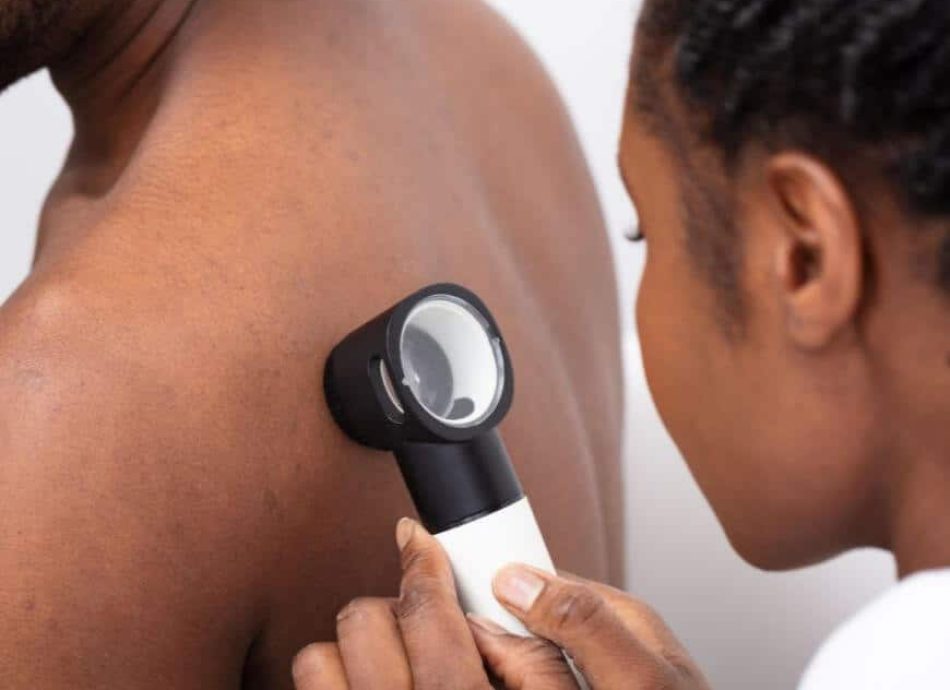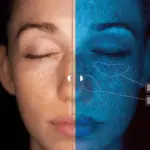Award winning dermatology service, with over 20 years on experience
Short waiting lists, on some occasions offering same week appointments
Safe environment, in Care Quality Commission approved facilities
Actinic Keratoses Treatments Include:
ACTINIC KERATOSIS Advice & Treatments in Manchester
Actinic Keratosis is sometimes referred to as solar keratosis. The rough, scaly patches of skin usually develop as a result of years of exposure from the sun. The most common areas where actinic keratosis develops are usually the areas of skin that receives the most sun exposure:
- Face
- Ears
- Scalp
- Shoulders
- Neck
- Back of the hands
- Forearms
An actinic keratosis usually develops over a long period of time. They don’t generally cause any signs or symptoms other than a patch or small spot on the skin. The patch or small spot then increases in size over the years.
They more commonly appear in people over the age of 40, however, they can affect people below that age also.
WHAT DOES ACTINIC KERATOSES LOOK LIKE?
Actinic keratoses are ill-defined rough patches, ranging in colour from pink to brown and measuring from 0.5 to 3cm in width (see figure). Some can resemble crusty outgrowths when they are particularly thick and raised.
If an AK starts to bleed or rapidly change in appearance or size this may indicate that it is progressing toward squamous cell carcinoma and medical advice must be sought immediately.
HOW DO I KNOW IF I’VE GOT ACTINIC KERATOSIS?
The appearance of actinic keratosis includes:
- Rough, dry or scaly patch skin
- Slightly raised patch or bump on top layer of skin
- A hard wart-like surface
- Colour can vary as pink, brown or red
- Although rare, itching and burning can occur in the affected area
Actinic Keratosis is not always cancerous. If treated early, it’s often quite straight-forward to remove the all actinic keratosis before it develops into skin cancer. Only a small percentage of lesions eventually become skin cancer if left untreated.
Some actinic keratoses can progress to squamous cell carcinoma, therefore, it’s important to treat actinic keratosis appropriately. If the actinic keratosis develops into cancer, it may present some signs and symptom, these can include:
- The lesion suddenly growing quickly
- A change in the shape
- Pain or discomfort on or around the lesion
- Bleeding
actinic keratoses images:



actinic keratosis removal Options
There are many treatments available for actinic keratosis, however the type of treatment offered to each patient will depend upon the extent of actinic keratosis and the thickness. The treatment plan will also need to suit your lifestyle. A variety of treatments are available and include:
- Chemical Peels
- Creams and ointments (5-fluorouracil, imiquimod or diclofenac sodium): these can be used when there are a large number of actinic keratoses, for example on the scalp.
- Photodynamic therapy: employs the use of a special cream, which is applied to affected areas and is activated by light of a specific wavelength.
- Cryotherapy: involves freezing an affected site with liquid nitrogen.
- Curettage or excision: this is performed under local anaesthetic and normally reserved for thicker patches and suspected skin cancers.
Though these options are highly effective, due to prior sun-damage it is likely that more actinic keratoses will develop in the surrounding skin, requiring future treatment.
Our Dermatologists at the Harley Street Dermatology Clinic can offer effective treatment for all types of sun damage including actinic keratoses.
Frequently Asked Questions
HOW IS ACTINIC KERATOSIS DIAGNOSED?
Healthcare providers will look closely at the lesion, they can often diagnose it alone by looking at and feeling the area of your skin. However, in some cases it can be hard to tell if an actinic keratosis is skin cancer, as a result, you may need a small amount of the area of skin checked under a microscope, this is also known as a skin biopsy.
At The Everything Skin ClinicTM, if we believe your actinic keratosis is cancerous, we will remove a small amount of skin and run a skin biopsy to test if it’s cancerous. If it is cancerous, our expert dermatologists can diagnose and treat the lesion all under one roof.
We treat both actinic keratosis and squamous cell carcinoma at The Everything Skin ClinicTM, this is particularly appealing to people who don’t want to wait long for treatment, or don’t want to have different referrals to different locations for diagnosis and treatments.
DOES ACTINIC KERATOSIS TURN INTO SKIN CANCER?
Actinic Keratoses are not life-threatening themselves and small patches may disappear on their own but some actinic keratoses can turn into squamous cell skin cancer so can be considered as precancerous. If they are found and treated early, they do not have the chance to develop into skin cancer.
WHAT DO PATCHES OF ACTINIC KERATOSES LOOK LIKE?
The patches can feel like sandpaper, they are dry rough and scaly. They usually range in size from 1cm to 2cm and can be itchy. They can either be the same colour as your skin, pink, red or brown.
WHERE ON THE BODY DO ACTINIC KERATOSIS USUALLY APPEAR?
As the patches of actinic keratosis are caused by exposure to the sun, they are most commonly found on areas of the body which are exposed to the sun such as the face, hands, arms, legs, ears and scalp.
WHAT CAN I DO IF I HAVE ACTINIC KERATOSIS?
If you have patches of actinic keratoses, it is important to get them checked by a dermatologist to reduce the risk of them developing in to skin cancer. To stop getting further patches and to look after your skin it is important to
- use sun cream before exposing your skin to the sun
- wear clothing which will protect your skin from the sun
- do not use sunbeds or sunlamps
- avoid the sun when it is at it’s strongest (between 11am and 3pm)
HOW CAN ACTINIC KERATOSES BE PREVENTED?
Actinic keratoses are usually little cause for concern. Small patches may disappear by themselves. However, it is important to adopt good sun-protection habits.
As actinic keratoses are caused by exposure to the sun, the key to prevention is avoiding the sun when its rays are most intense, especially around the middle of the day. Before going outdoors follow the usual sun safety measures of applying sunscreen with a high SPF and protection from both UVA and UVB light and wearing clothes designed to provide sun protection. It is also important to follow these steps if you already have signs of actinic keratoses in order to reduce the chances of them developing into skin cancer.
REQUEST A CALL BACK
Please fill in this form and one of our team will give you a call back to arrange a consultation with one of our expert dermatologists.
"*" indicates required fields

HEAR FROM OUR PATIENTS
Why Treat Your Actinic Keratoses at EVERYTHING SKIN CLINIC?
At Everything Skin Clinic™, we have a team of highly trained Consultant dermatologists, who have completed specialist training in Dermatology and are on the specialist register of the General Medical Council. All our consultants hold substantive contracts with the best Dermatology centres in leading NHS hospitals. Therefore, you can be certain of the highest quality actinic keratosis removal in Manchester.
We offer a range of treatments and can offer one, or a combination of treatments to achieve the best results. Unlike many other clinics, we can offer diagnosis and treatment all under one roof by expert consultant dermatologist, so you know you’ll be in safe hands.
INSIGHTS AND ADVICE

Comprehensive Autumn Skin Care Guide
Autumn, with all its glorious colours, also brings a few challenges for our skin. As the air gets cooler and the leaves change colour, keeping your skin glowing and healthy during the transition from summer can feel a bit tricky. But don’t fret – this

Eczema Awareness Month – Your Eczema Guide
October serves as Eczema Awareness Month. For those of you dealing with eczema, you’ll know the challenge of managing this skin condition all too well. Our commitment throughout October and always, is to enlighten, support and empower you by sharing invaluable insights about its origin,

Demystifying Varicose Veins: Identifying, Controlling And Avoiding
Varicose Disease Awareness Month is dedicated to raising awareness about a common yet often overlooked condition affecting millions worldwide —varicose veins. Throughout September, we aim to shed light on the importance of early detection, treatment options and lifestyle adjustments to manage varicose veins effectively. By

